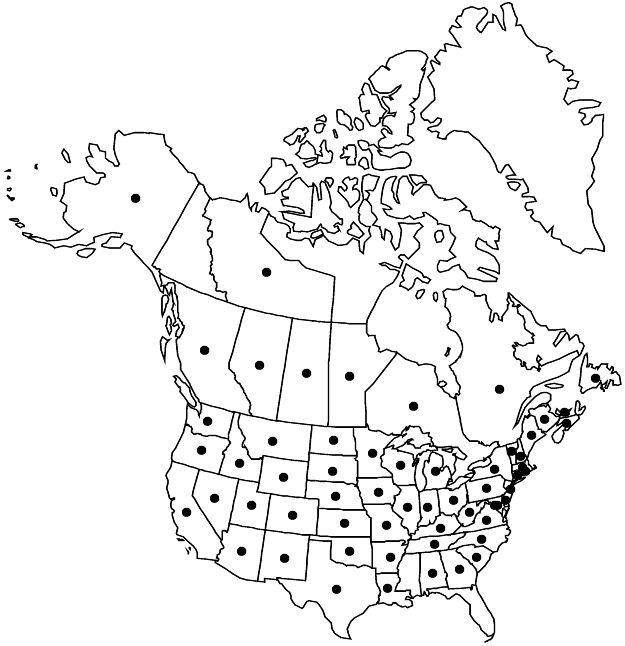Malva neglecta
in C. F. Hornschuch, Syll. Pl. Nov. 1: 140. 1824.
Herbs, annual, biennial, or perennial, 0.2–0.6 m, trailing stems sometimes to 1 m, usually sparsely stellate-hairy and with simple hairs. Stems usually prostrate to ascending, sometimes trailing, sparsely stellate-hairy with simple hairs persistent on older stems. Leaves: stipules persistent, narrowly triangular, 3–6 × 2.5 mm, papery; petiole usually 2–5 times as long as blade, gradually reduced distally; blade reniform to orbiculate-cordate, unlobed or very shallowly 5–7-lobed, 1.5–3.5(–6) × 1–4(–5) cm, base cordate, margins crenate-dentate, apex obtuse or rounded, surfaces glabrous or sparsely stellate-hairy. Inflorescences axillary, 2–6-flowered fascicles, long-stalked. Pedicels 1–5 cm, usually 10+ mm in fruit, several times longer than calyx, slender and flexible in fruit; involucellar bractlets distinct, not adnate to calyx, linear to narrowly oblong-lanceolate, 3–5(–6) × 1 mm, shorter than calyx, margins entire, surfaces sparsely stellate-puberulent and short-ciliate. Flowers: calyx 4–7 mm, slightly accrescent, to 8 mm in fruit, lobes enclosing mericarps, not veined, triangular-ovate, stellate-hairy, ciliate; petals pale lilac to whitish, drying pinkish or whitish, or faded, veins not darker, (6–)9–13 mm, length 2 times calyx, apex notched; staminal column 4–4.5 mm, retrorsely stellate-puberulent; style 12–15-branched; stigmas 12–15 (same number as locules), purple. Schizocarps 6 mm diam.; mericarps 12–15, 1.5–2 mm, apical face and margins rounded-angled, not winged or toothed, sides thin and papery, smooth to slightly roughened or reticulate, surfaces puberulent apically. Seeds 1–1.5 mm. 2n = 42.
Phenology: Flowering Apr–Oct.
Habitat: Disturbed areas, vacant lots, farm yards
Elevation: 0–2700 m
Distribution

Alta., B.C., Man., N.B., Nfld. and Labr. (Nfld.), N.S., N.W.T., Ont., P.E.I., Que., Sask., Ala., Alaska, Ariz., Ark., Calif., Colo., Conn., Del., D.C., Ga., Idaho, Ill., Ind., Iowa, Kans., Ky., La., Maine, Md., Mass., Mich., Minn., Mo., Mont., Nebr., Nev., N.H., N.J., N.Mex., N.Y., N.C., N.Dak., Ohio, Okla., Oreg., Pa., R.I., S.C., S.Dak., Tenn., Tex., Utah, Vt., Va., Wash., W.Va., Wis., Wyo., Europe, Asia, introduced also in Mexico (Chihuahua), West Indies (Dominican Republic), Central America (Panama), South America (Argentina, Brazil), s Asia (India, Pakistan), Africa, Pacific Islands (New Zealand), Australia.
Discussion
Malva neglecta is the most commonly found mallow in most of North America. It has been introduced essentially worldwide in temperate areas and is usually considered a weed. In some older treatments, it was included within M. rotundifolia Linnaeus, a name rejected because of its inconsistent use for this species as well as for M. pusilla and other species. The immature, mucilaginous fruits are sometimes eaten; they have the appearance and texture of an old-fashioned wheel of cheese, hence one of the common names.
Selected References
None.